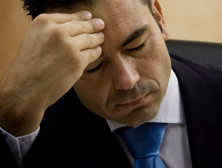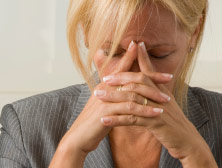MigraineHelper.com
 |
 |
 |
 |
|
Migraine Headache Treatments for KidsMigraine headaches do not take age into consideration. Anybody at any age can experience a migraine headache and statistics indicate that 5 percent of young school-age children and 20 percent of high-school age children suffer with debilitating migraines frequently. Unique Properties of Migraines in Kids
Migraines in children and teens tend to be shorter in duration than they are in adults and often the level of medications prescribed, especially for teens, is more than their bodies can deal with. The headaches go away, but they lose many hours of time in the process, often sleeping for extended periods. Tailoring the treatment to the patient is an art, and the findings indicate that behavioral therapies coupled with preventative measures seem to garner the best results. Often, the best treatment for a migraine is sleep. It gives the brain a chance to resume normal function, relieves pain and resolves many of the associated symptoms of migraine. If the child has been given a prescription, the recommended dose should be administered. Knowledge is Power - Be Educated
Knowledge is power and it is especially empowering to have an understanding of the problem you are facing and the best ways to deal with it. Have the doctor explain to both parent and child what migraines are, how they happen, and what can be done to prevent or treat them. If a child has mild, infrequent attacks of migraines, the treatment would likely consist of rest, avoiding triggers and stress reduction. Routines and Records
After ensuring the issue is true a migraine, and putting to rest the concerns for more serious problems, a regular routine is a good place to start in developing control mechanisms for the headaches. Regular bed times, mealtimes and not overloading the child with too many activities are important factors. It may be a bit more difficult to help the child recognize triggers for headaches, but it can be helpful in lowering the occurrence of migraines. When Pain Strikes...
When a migraine attack takes place, parents should have the child lie down in a darkened, cool, quiet room with a cool cloth on their head to help them fall asleep. Sleep is a most powerful healer and often children can be found sleeping in the fetal position with the hurting side of their head downward. Often an icepack on the painful side of the head can address the pain for a short time. Common, over-the-counter pain medicines can be effective if taken at the start of the headache. Absorption of oral medications may be difficult later in the attack as digestion temporarily slows down during a migraine. Alternative Methods
Other types of treatments such as biofeedback, self-relaxation and self-hypnosis may be reasonable alternatives to drug therapies for childhood migraines, particularly when they appear in teens.
|
n |